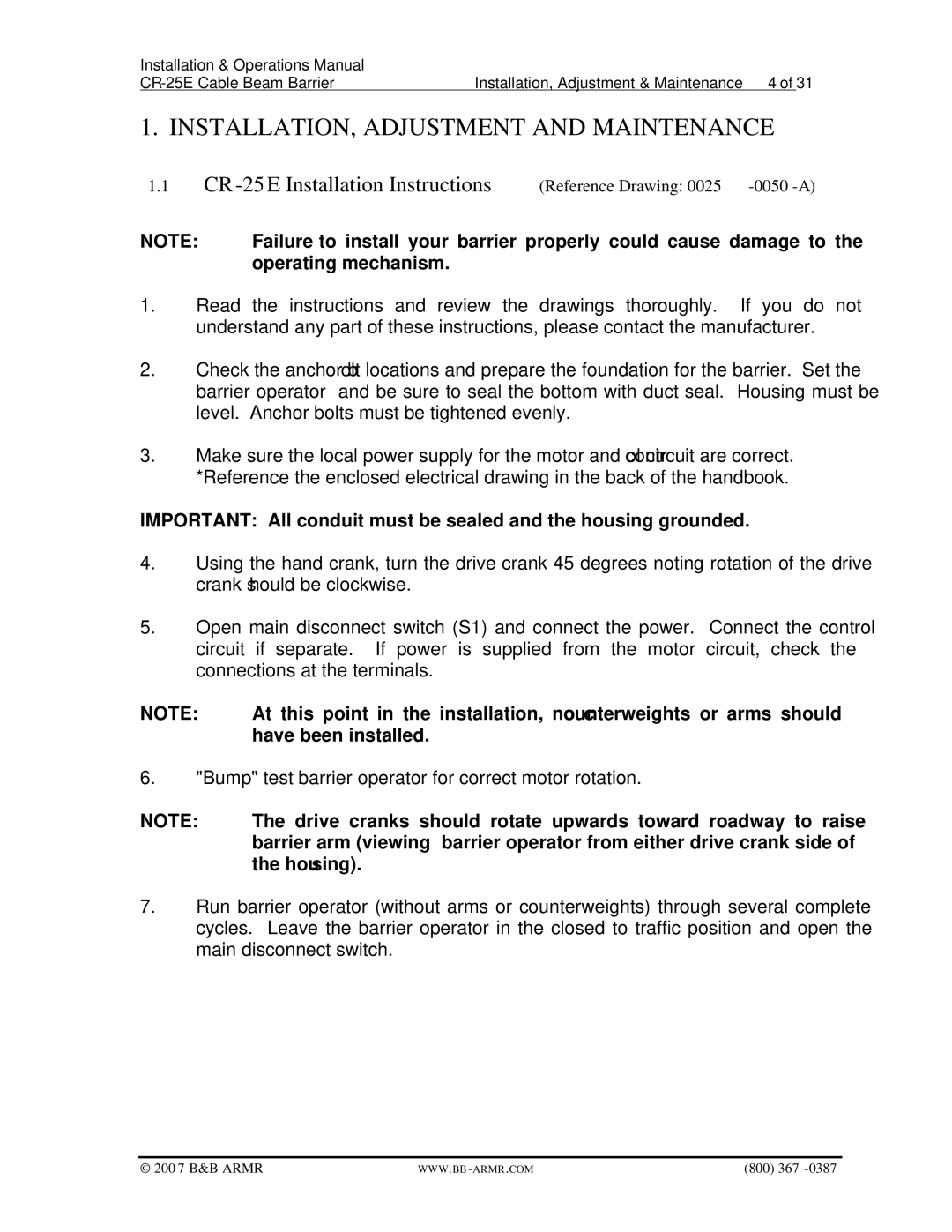CR-25E specifications
B&B Electronics CR-25E is a robust and versatile device designed for fulfilling the needs of industrial communication systems. Characterized by its reliability and advanced functionality, the CR-25E is widely recognized in the automation and control sectors.One of the key features of the CR-25E is its high-speed data transmission capabilities. With support for both RS-232 and RS-485 communication protocols, the device ensures seamless integration across various systems. The CR-25E operates at speeds up to 115.2 Kbps, allowing for rapid data exchange, which is crucial in applications like robotic controls, sensors, and monitoring systems.
Another standout characteristic of the CR-25E is its built-in isolation features. With 2.5 kV isolation on the serial lines, it protects the connected equipment from voltage spikes and noise, significantly enhancing the reliability of the communication link. This isolation effectiveness is particularly valuable in environments rife with electrical interference, as it ensures stable operation and long-lasting performance.
The CR-25E supports multiple power input options, including AC and DC power supplies. This flexibility enables easy integration into existing systems without the need for extensive modifications or additional components. The device also features wide input voltage ranges, thus accommodating different industrial environments and requirements.
In terms of mounting options, the CR-25E is designed with user-friendliness in mind. The compact design and DIN rail compatibility facilitate easy installation in control panels, maximizing space efficiency while maintaining accessible connectivity for maintenance or troubleshooting.
For monitoring and configuration, the CR-25E integrates effortlessly with various industrial software and applications. The device features diagnostic LEDs to provide real-time indications of operational status, simplifying troubleshooting by allowing users to quickly identify issues.
In summary, B&B Electronics CR-25E stands out due to its high-speed data transmission, robust isolation features, versatile power input capabilities, and user-friendly design. These attributes make it a preferred choice among engineers and technicians in the field of industrial communication, ensuring that systems remain efficient, reliable, and effective in demanding operational settings.

